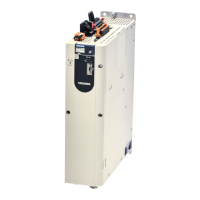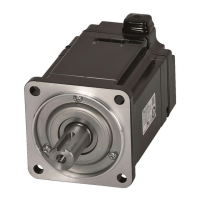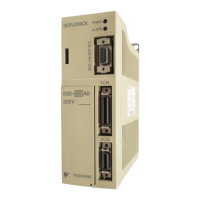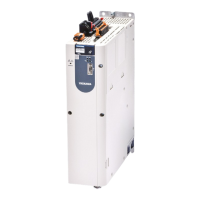8.4 Tuning-less Function
8.4.1 Application Restrictions
8-12
8.4
Tuning-less Function
The tuning-less function performs autotuning to obtain a stable response regardless of the type
of machine or changes in the load. Autotuning is started when the servo is turned ON.
8.4.1
Application Restrictions
The following application restrictions apply to the tuning-less function.
* : Yes ×: No
The tuning-less function is disabled during torque control.
The Servomotor may momentarily emit a sound the first time the servo is turned ON after
the Servomotor is connected to the machine. This sound is caused by setting the automatic
notch filter. It does not indicate a problem. The sound will not be emitted from the next time
the servo is turned ON.
The Servomotor may vibrate if it exceeds the allowable load moment of inertia.
If that occurs, set the tuning-less load level to 2 (Pn170 = n.2) or reduce the tuning-
less rigidity level (Pn170 = n.X).
To ensure safety, make sure that you can perform an emergency stop at any time when you
execute the tuning-less function.
Function Executable? Remarks
Vibration Detection Level
Initialization
–
Moment of Inertia Estimation ×
Disable the tuning-less function (Pn170 = n.0)
before you execute moment of inertia estimation.
Autotuning without Host
Reference
×
Disable the tuning-less function (Pn170 = n.0)
before you execute autotuning without a host reference.
Autotuning with Host Reference × –
Custom Tuning × –
Anti-Resonance Control
Adjustment
× –
Vibration Suppression × –
Easy FFT
The tuning-less function is disabled while you execute
Easy FFT and then it is enabled when Easy FFT has been
completed.
Friction Compensation × –
Gain Selection × –
Mechanical Analysis
The tuning-less function is disabled while you execute
mechanical analysis and then it is enabled when mechan-
ical analysis has been completed.

